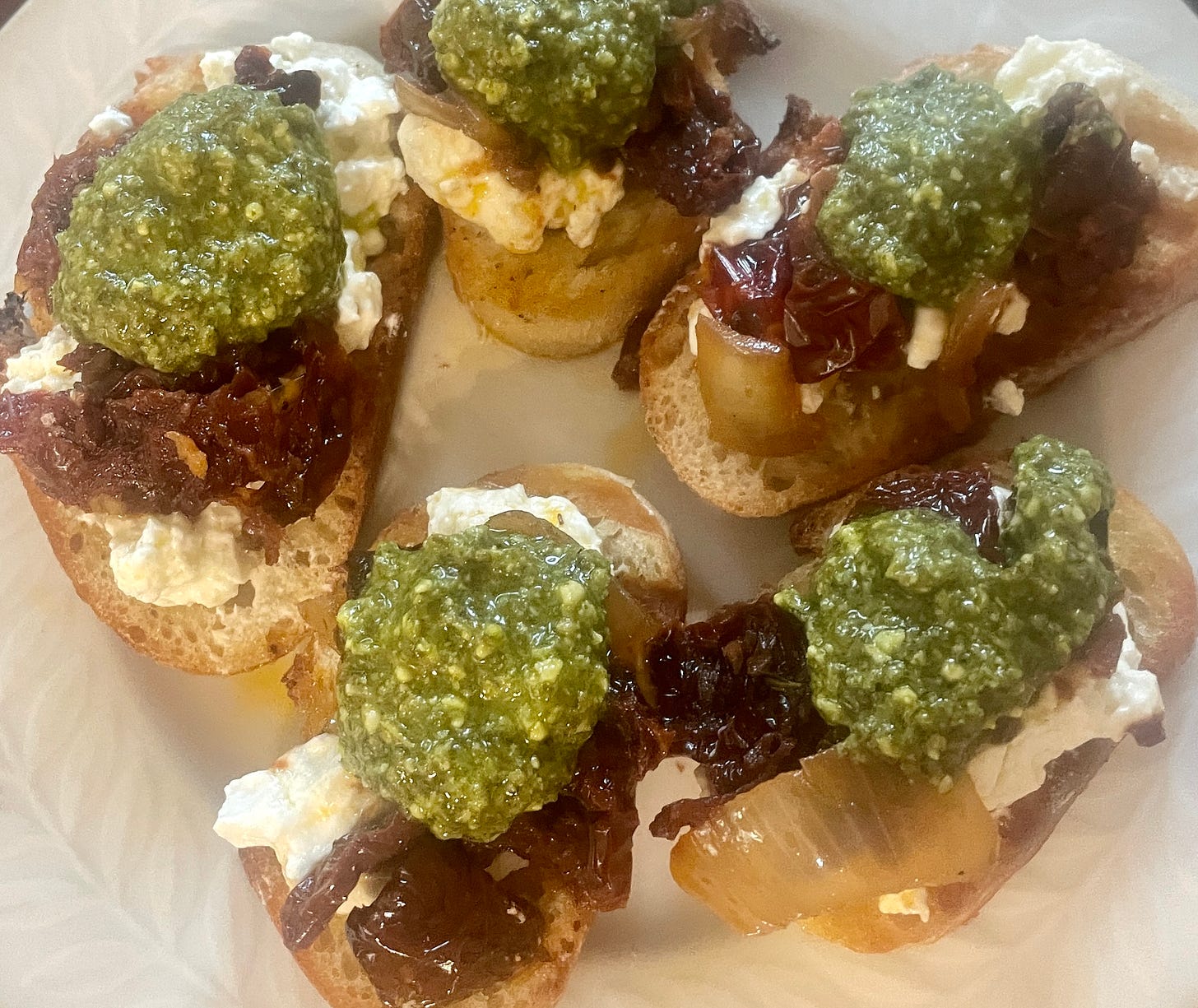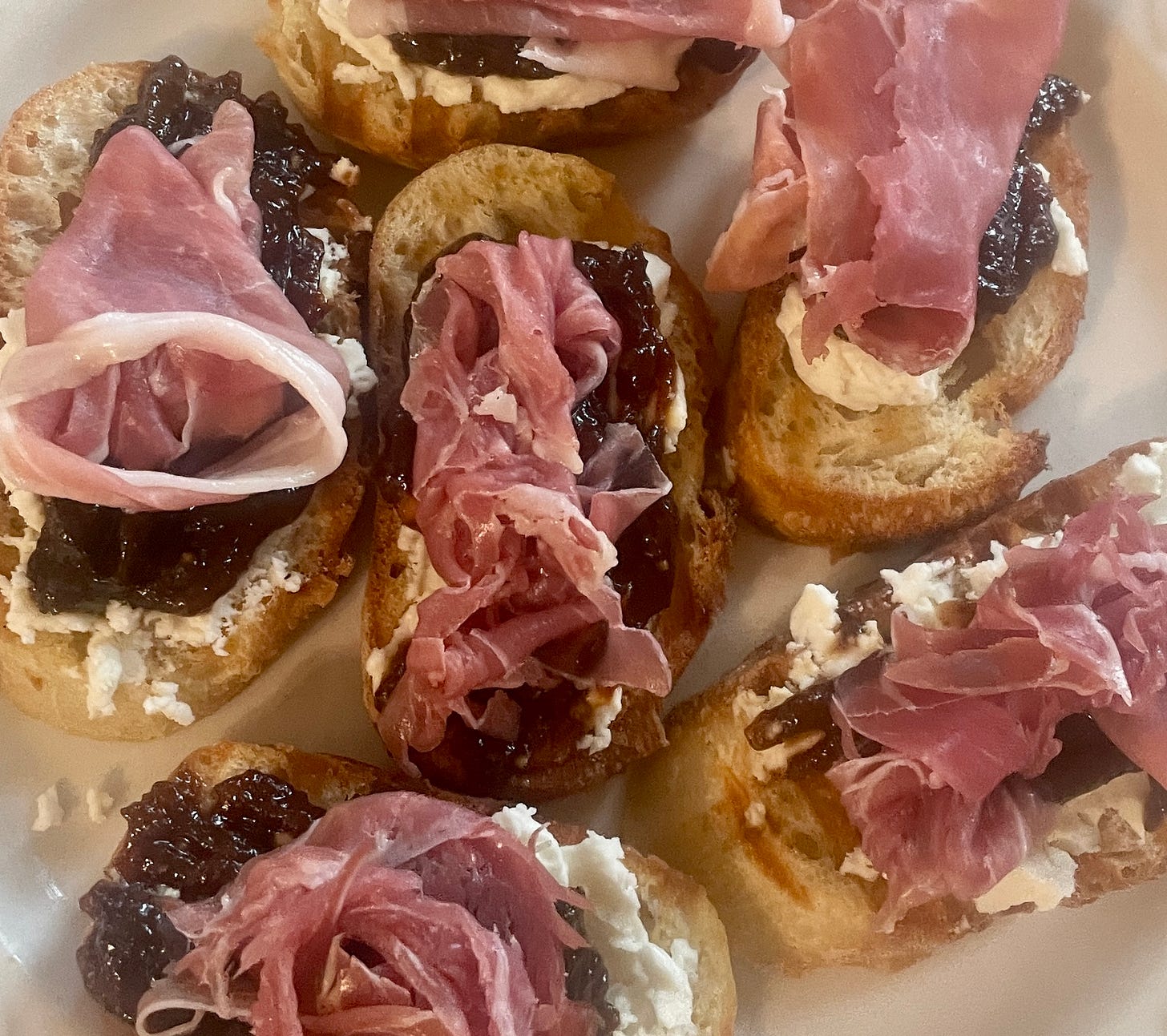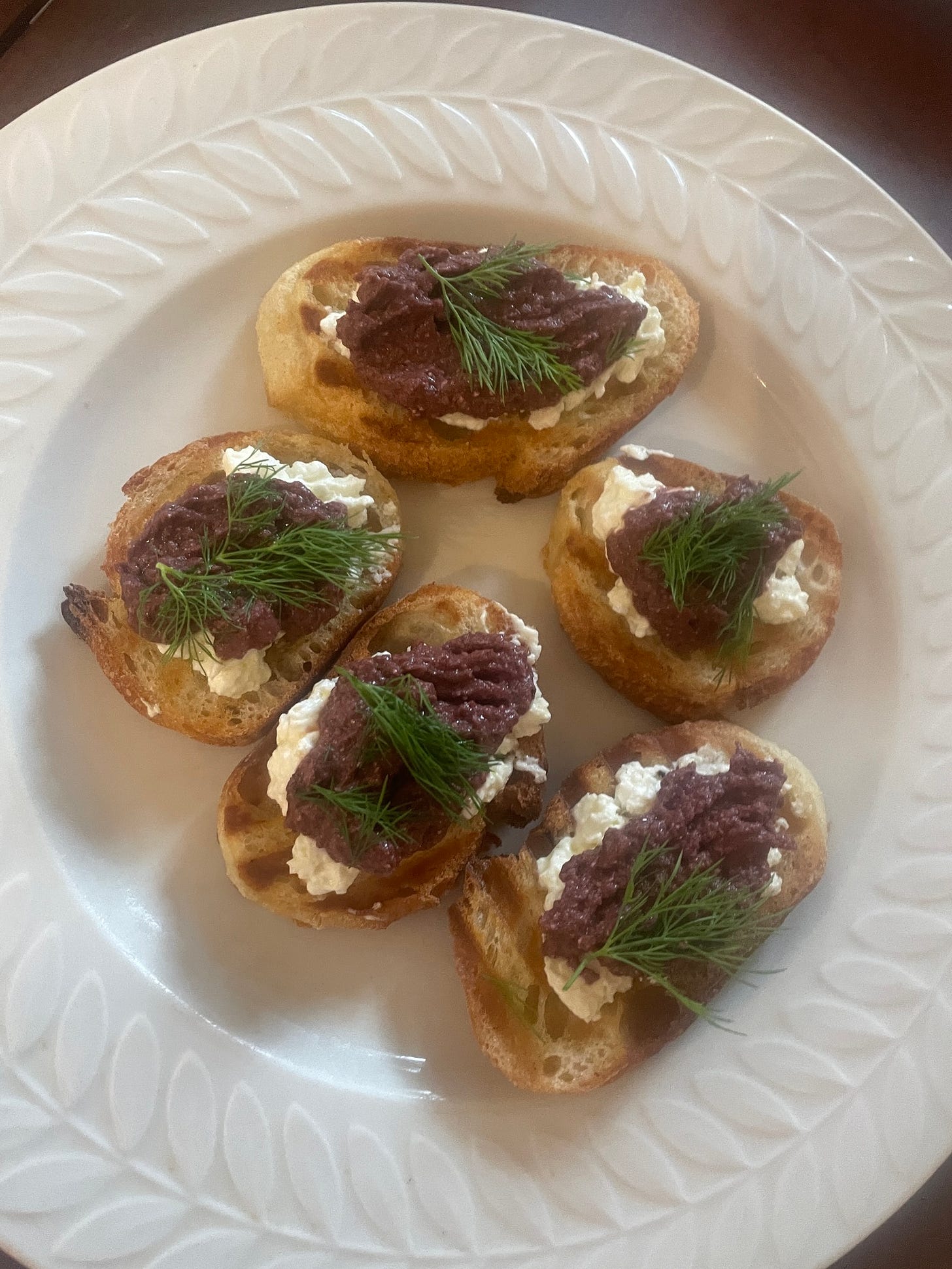Thanksgiving Appetizers & Drinks
The one summer I spent in Italy, attached to the Spoleto Music Festival, my second favorite thing about afternoon concert days, besides the concerts themselves, was the after-concert repast of Franciacorta (methode champenois sparkling wine from Lombardy) and a spread of crostini, served to us by a very well-dressed and aristocratic woman with a Blanche Dubois vibe, in a third floor space overlooking the Caio Melisso Theater.
Franciacorta is made with the same grapes as those in Champagne, and the combination of salty, umami-rich toppings on toasted bread and the richly satisfying sparkling wine was thrilling.
Like Prosecco, Andrea Bocccelli, and Franciacorta to a lesser extent, crostini are more common to the American idiom than they were twenty-five years ago, but they are nonetheless the perfect vehicle for a variety of toppings, anchored to a piece of olive oil brushed toasted baguette.
The really nice thing about crostini is that they are layered—you can start with some soft cheese, like whipped feta or goat, add some pesto, tapenade or fig butter on top, and then finally top them off with a layer of protein, vegetables or beans, and then perhaps add a sprig of herbs to finish.
My first go-to crostini recipe was my Father’s from the Union Square Bistro in Somerville, MA. There are very few better combos than sun-dried tomato and fresh pesto, and if you add goat cheese as a base, you have a great easy appetizer. You can garnish with a chiffonade of basil or get fancy with Giada DeLaurentis’s recipe for sun-dried tomato and onion jam (https://www.foodnetwork.com/recipes/giada-de-laurentiis/crostini-with-sun-dried-tomato-jam-recipe-1953718).
Another classic Italian combo is prosciutto and fig. My dear cousin’s favorite pizza is prosciutto and fig, which we both first enjoyed at Todd English’s Charlestown pizzeria Figs in the early 90’s. You can make great crostini with fresh-sliced fig or fig jam (Divina and Trader Joe’s both make good ones), use a base of whipped feta or goat cheese, and then simply garnish with a paper-thin slice of prosciutto.
Divina also makes a terrific olive spread, which you could jazz up in the Cuisinart with feta, fresh minced garlic and lemon zest, or just use out of the jar, to make the crown jewel of this genre, olive tapenade crostini. I like feta or goat cheese under the spread (tapenade is delicious on it’s own too), and you could add some roughly chopped olives on top, a shave of parmigiano or a drizzle of olive oil. Freshly torn basil or dill is good to add on top as well.
Other possible combinations are smoked salmon and arugula pesto with feta, roasted vegetables with goat cheese and parmigiano or chicken liver mousse with a dice of toasted hazelnuts. If the bread can hold it and the combination of ingredients is solid, it’ll be delicious.
What about the wine? Sparkling is always a good choice to kick off an evening in company, and for value versus price, Cava is a good category to look in, unless you’ve got Krug money!
For Thanksgiving Dinner, mid-weight reds and assertive whites are the best go-to.
Riesling and Gewurztraminer are excellent choices for white, with enough acidity to complement the richness of the main course, and a flavor profile that can really enhance the enjoyment of sweet or spicy sides.
For red, Tempranillo and Sangiovese are both good choices, but Pinot Noirs from Oregon or Burgundy are my absolute favorite with Turkey and trimmings.
When planning your holiday fêtes, here are two classic cocktails you might also consider (the second with two variations):
The Sidecar
1 1/2 oz Cognac
3/4 oz Cointreau
3/4 oz fresh lemon juice
(Shake and serve in a martini glass or coupe with a sugared rim)
The Godfather
2 oz Bourbon
1/2 oz Amaretto di Saronno
(Stir and serve in a short glass with ice. If you substitute vodka for whiskey, it’s then called a Godmother—it’s not canon, but I’d add a squeeze of fresh lemon to a The Godmother).
Happy feasting to all!





